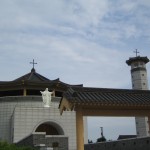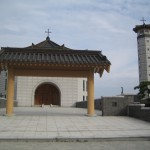“Isn’t it ironic how after making such a huge sacrifice to immigrate to Canada, so that your children to have a better life, your son goes ahead and moves to Korea?”
While I was visiting Vancouver a few months ago, but still living in Korea, that was a statement I overheard someone tell my father. (I am now back living in Canada).
I was born and raised in Canada. My parents left absolutely everything in Korea over 30 years ago so that my sisters and I could have a better life. I even remember my father telling me how when he got off the airplane and landed in Canada, all he had was $10. And with that $10 he bought a watch and got a ride to his parent’s house, who also just recently immigrated.
When my parents moved to Canada, they had absolutely nothing…except family, love, hope for a better future, and God. They moved away from a country where they knew the language, the culture, the history, and the food, and they became aliens, mutes, and deafs in a foreign country called ‘Canada.’
They worked at grocery stores, saved every penny, and did whatever they could do in order to forge a better future for their children. They didn’t want their children to go through what they were going through. They sacrificed.
[Read more…] about The Immigrant Sacrifice


